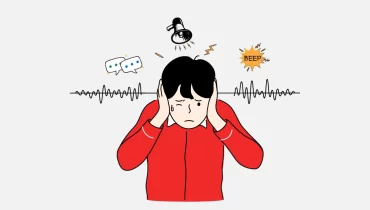In recent years, there has been a growing recognition of the importance of prioritizing child and adolescent health initiatives. With a focus on preventive care, education, and early intervention, these initiatives aim to address a wide range of health challenges faced by young people today. From promoting healthy lifestyles to tackling mental health issues, various strategies are being implemented to ensure the well-being of children and adolescents across the globe. In this article, we will explore some of the key initiatives and programs aimed at improving child and adolescent health, along with their impact and effectiveness.
1. Comprehensive Healthcare Access
Access to healthcare services is essential for promoting the health and well-being of children and adolescents. Initiatives aimed at expanding access to healthcare, such as Medicaid and the Children’s Health Insurance Program (CHIP), play a crucial role in ensuring that young people receive the medical care they need. These programs provide coverage for essential services, including preventive care, immunizations, and treatment for chronic conditions, helping to address disparities in healthcare access among children from low-income families.
2. School-Based Health Centers
School-based health centers (SBHCs) are another important initiative that provides primary healthcare services to children and adolescents in educational settings. These centers offer a wide range of services, including medical, dental, mental health, and reproductive health care. By placing healthcare providers directly within schools, SBHCs ensure that students have easy access to healthcare services, thereby promoting early intervention and addressing health issues before they become more serious.
3. Mental Health Awareness and Support
The mental health of children and adolescents is a growing concern, with rates of anxiety, depression, and other mental health disorders on the rise. Initiatives aimed at raising awareness about mental health issues and providing support and resources to young people are critical for addressing this challenge. Programs such as school-based counseling services, peer support groups, and community mental health initiatives help to reduce stigma, promote early identification of mental health concerns, and provide young people with the support they need to thrive.
4. Nutrition and Physical Activity Programs
Promoting healthy eating habits and regular physical activity is essential for preventing obesity and other chronic health conditions among children and adolescents. Initiatives aimed at improving nutrition and increasing physical activity levels in schools and communities play a crucial role in shaping healthy behaviors from a young age. Programs such as school lunch programs, nutrition education initiatives, and community sports leagues help to promote healthy lifestyles and reduce the risk of obesity and related health problems.

5. Preventive Care and Immunizations
Preventive care, including routine check-ups, vaccinations, and screenings, is essential for detecting and addressing health issues early in life. Initiatives aimed at increasing immunization rates and promoting preventive care services help to protect children and adolescents from vaccine-preventable diseases and other health threats. Through efforts such as public health campaigns, community outreach programs, and school-based immunization clinics, stakeholders work together to ensure that young people receive the vaccines and screenings they need to stay healthy.
6. Substance Abuse Prevention
Substance abuse among adolescents is a significant public health concern, with potentially serious consequences for physical health, mental health, and overall well-being. Initiatives aimed at preventing substance abuse and supporting young people who may be struggling with addiction are essential for addressing this issue. Prevention programs implemented in schools and communities focus on educating young people about the risks of substance abuse, promoting healthy coping skills, and providing support and resources for those in need of assistance.
7. Injury Prevention and Safety
Injuries are a leading cause of death and disability among children and adolescents worldwide. Initiatives aimed at promoting injury prevention and safety education help to reduce the risk of accidents and injuries among young people. These initiatives may include programs focused on bicycle safety, car seat use, drowning prevention, and sports safety. By providing education, resources, and support to children, adolescents, parents, and caregivers, these initiatives help to create safer environments and prevent injuries before they occur.
8. Adolescent Sexual and Reproductive Health
Adolescents face unique challenges related to sexual and reproductive health, including unintended pregnancy, sexually transmitted infections (STIs), and HIV/AIDS. Initiatives aimed at promoting adolescent sexual and reproductive health focus on providing comprehensive sex education, increasing access to contraceptives and reproductive health services, and empowering young people to make informed decisions about their sexual health. By addressing these issues proactively, stakeholders can help to reduce the risk of unintended pregnancies, STIs, and other adverse outcomes among adolescents.
Child and adolescent health initiatives play a crucial role in promoting the health and well-being of young people and ensuring that they have the opportunity to thrive. From expanding access to healthcare services to promoting mental health awareness and supporting healthy behaviors, these initiatives address a wide range of health challenges faced by children and adolescents today. By investing in preventive care, education, and early intervention, stakeholders can make a meaningful difference in the lives of young people and lay the foundation for a healthier future.


















